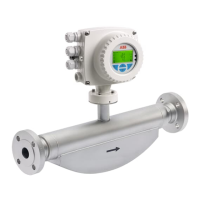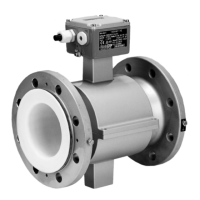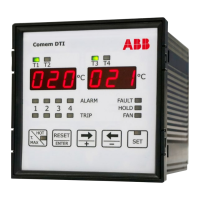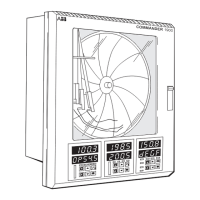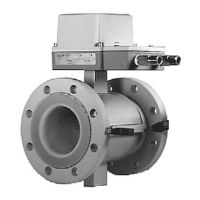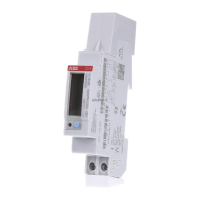CoriolisMaster FCB330, FCB350, FCH330, FCH350 | CI/FCB300/FCH300-EN Rev. F 41
8.3 Electrical data for Div. 1 / Zone 1
8.3.1 Version I: Active / passive current outputs
Model FCx3xx-F1, FCT3xx-F1
Type of protection non IS
Vmax
(V) Imax
(mA) Vmax
(V) Imax
(mA) P
(mW) C
(nF) C
(nF) L
(mH)
Current output 1, active
Terminals 31 / 32
30 30 20 100 500 217 0 3.8
VMax (V) I
(mA) P
(mW) C
(nF) C
(nF) L
(mH)
60 100 500 2.4 2.4 0.17
Current output 2, passive
Terminals 33 / 34
30 30 30 100 760 2.4 2.4 0.17
Pulse output, active or passive
Terminals 51 / 52
30 65 15 30 115 2.4 2.4 0.17
Switching output, passive
30 65 15 30 115 2.4 2.4 0.17
Switching input, passive
30 10 30 60 500 2.4 2.4 0.17
All inputs and outputs are electrically isolated from one other and from the power supply. Only current outputs 1 and 2 are not
electrically isolated from one another.
8.3.2 Version II: Passive / passive current outputs
Model FCx3xx-F1, FCT3xx-F1
Type of protection non IS
Type of protection IS
Current output 1, passive
Terminals 31 / 32
30 30 60 300 2000 0.47 0.47 0.17
Current output 2, passive
30 30 60 300 2000 0.47 0.47 0.17
Pulse output, active or passive
Terminals 51 / 52
30 65 60 300 2000 0.47 0.47 0.17
Switching output, passive
Terminals 41 / 42
30 65 60 300 2000 0.47 0.47 0.17
Switching input, passive
30 10 60 300 2000 0.47 0.47 0.17
All inputs and outputs are electrically isolated from one other and from the power supply.
Chan ge from on e to two c olumns
8.3.3 Special connection conditions
The output circuits are designed so that they can be
connected to both intrinsically-safe and non-intrinsically-safe
circuits.
It is not permitted to combine intrinsically-safe and non-
intrinsically safe circuits. In case of a change of type of
protection observe chapter 6.7.5.
On intrinsically-safe circuits, equipotential bonding must be in
place along the entire length of the cable used for the current
outputs.
The rated voltage of the non-intrinsically-safe circuits is
U
M
= 60 V.
Provided that rated voltage UM = 60 V is not exceeded if
connections are established to non-intrinsically-safe external
circuits, intrinsic safety is retained.
IMPORTANT (NOTE)
The transmitter and flowmeter sensor enclosures must be
connected to equipotential bonding PA. The operator must
ensure that when connecting the protective conductor PE no
potential differences can occur between the protective
conductor PE and the equipotential bonding PA.
Chan ge from tw o to one c olum n

